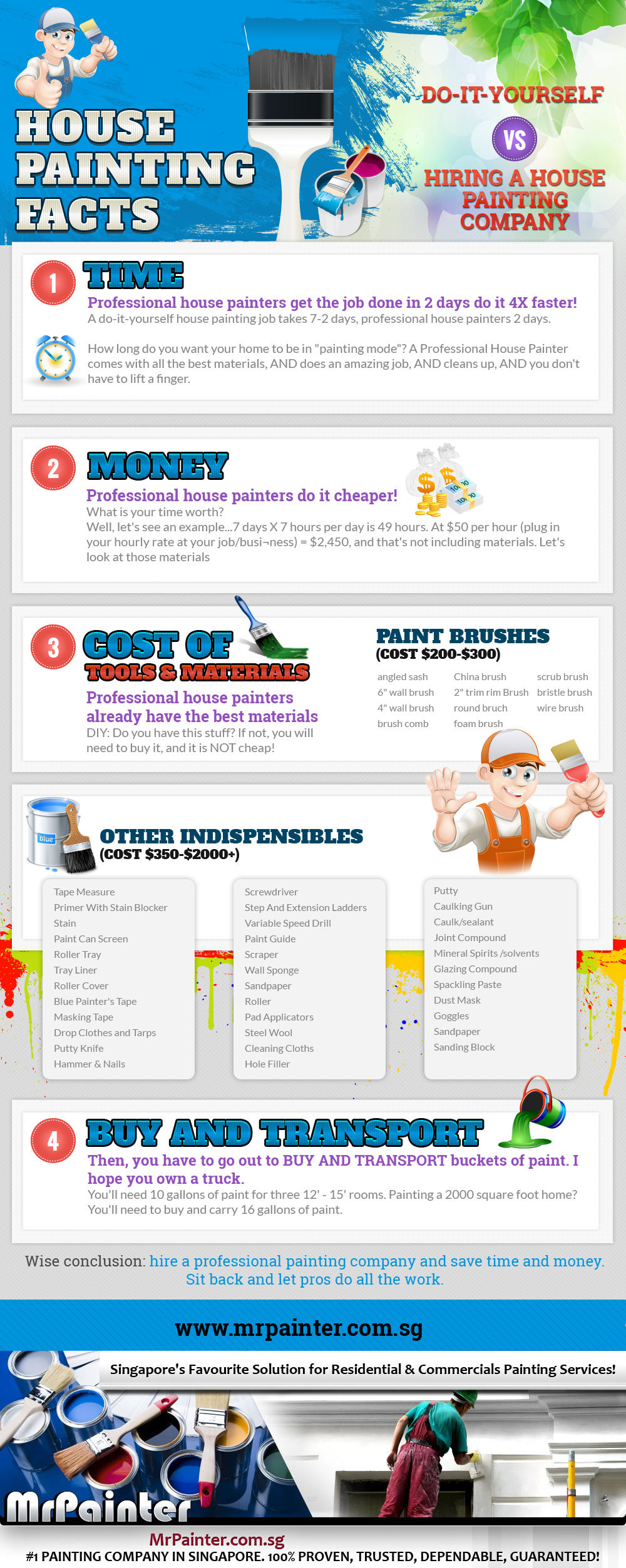Key Seasonal Considerations For Commercial Outside Paint: What You Need To Be Enlightened Concerning
Key Seasonal Considerations For Commercial Outside Paint: What You Need To Be Enlightened Concerning
Blog Article
Post Written By-Doherty Rodriquez
When you're planning a business outside painting project, seasonal variables can make or damage your outcomes. You'll intend to take into consideration just how temperature and moisture influence paint application and drying times. Picking the appropriate season can ensure your paint sticks properly and lasts longer. But which periods are really the most effective for this kind of work? Let's check out the crucial elements that can affect your job's success.
The Effect of Temperature Level on Paint Application
When you're intending a business exterior paint job, the temperature level can significantly influence exactly how well the paint sticks and dries.
Ideally, you intend to repaint when temperature levels vary between 50 ° F and 85 ° F. If it's too chilly, the paint may not treat properly, leading to issues like peeling off or fracturing.
On the other side, if it's too warm, the paint can dry too rapidly, stopping correct adhesion and causing an uneven finish.
You need to likewise consider the time of day; early morning or late afternoon provides cooler temperature levels, which can be much more beneficial.
Always inspect Source Webpage for the details paint you're using, as they frequently give assistance on the ideal temperature level array for ideal outcomes.
Moisture and Its Result on Drying Times
Temperature isn't the only ecological element that affects your industrial external paint task; humidity plays a significant duty also. High humidity levels can reduce drying times dramatically, impacting the overall quality of your paint work.
When the air is saturated with moisture, the paint takes longer to cure, which can bring about issues like poor adhesion and a greater threat of mildew growth. If you're painting on a specifically humid day, be prepared for extended delay times in between layers.
It's important to keep track of local weather and plan accordingly. Preferably, aim for humidity levels in between 40% and 70% for optimal drying.
Keeping these factors in mind ensures your task remains on track and provides an enduring finish.
Best Seasons for Commercial Exterior Paint Projects
What's the most effective season for your business exterior painting tasks?
https://jaidenmuzgn.bloggazza.com/34141107/10-reasons-why-you-must-think-about-a-professional-painting-company and early fall are typically your best options. Throughout these periods, temperature levels are moderate, and humidity degrees are frequently lower, creating ideal conditions for paint application and drying out.
Prevent summer season's intense heat, which can trigger paint to completely dry as well quickly, causing poor bond and finish. Likewise, wintertime's cold temperatures can impede proper drying and healing, risking the durability of your paint task.
Go for days with temperatures in between 50 ° F and 85 ° F for optimum results. Keep in mind to examine the regional weather prediction for rainfall, as damp problems can ruin your project.
Preparation around these aspects ensures your painting task runs efficiently and lasts much longer.
Verdict
Finally, intending your business external paint tasks around seasonal considerations can make a substantial difference in the outcome. By scheduling job throughout the perfect temperature levels and humidity degrees, you'll guarantee much better attachment and drying times. Keep in paint labor cost to keep an eye on regional weather forecasts and select the correct time of year-- spring and early autumn are your best options. Taking these actions will certainly help you attain a sturdy and specialist finish that lasts.
